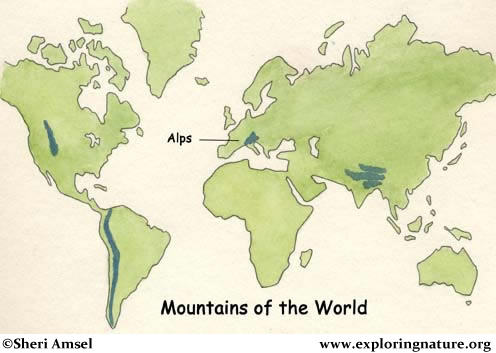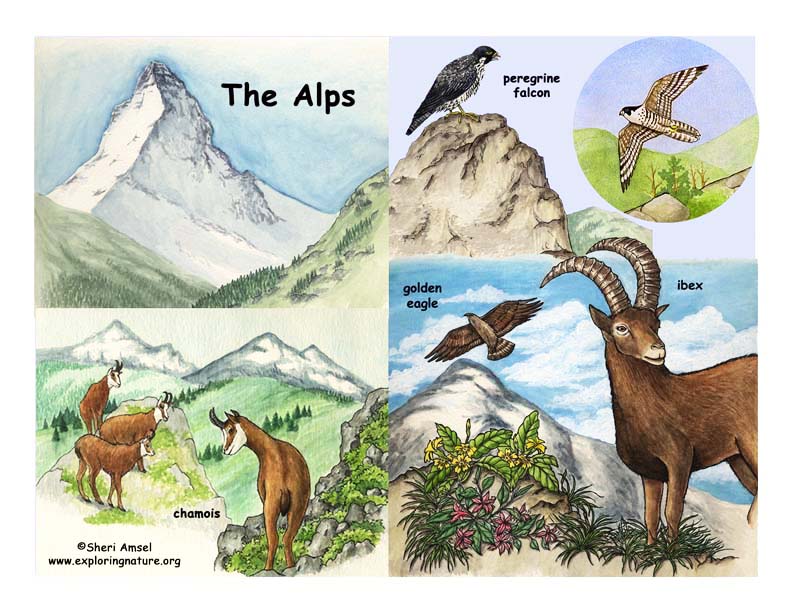

The largest mountain range in Europe, the Alps, forms an awesome border between France and Italy. They also stretch east through Italy, Switzerland, Germany and Austria. Bordering Switzerland and Italy, the Matterhorn attracts thousands of travelers for climbing and viewing.
Even surrounded by the many millions of people of Europe, the Alps are far from tame. Hot winds sometimes blow, causing sudden warming that can launch dangerous avalanches. Formed by glaciers, the slopes lead up to the jagged peaks.
Peregrine falcons nest on high, rocky crags, swooping down to catch small birds in mid-flight. Groups of agile goat-like chamois leap from rocky ledge to ledge. Here they can graze on lichens and grasses. Even pine needles are edible food. As winter approaches, the chamois move down into the forested slopes. The ibex lives even higher up on the Alps' snowline. A wild goat, the ibex has been heavily hunted for meat until it has become endangered. Golden eagles soar, hunting for rodents or even a chamois fawn.
These mountains are covered with beech, oak, pine and spruce. In the spring and summer, high mountain slopes bloom with mountain azalea, campanulas, and many other wildflowers.
When you research information you must cite the reference. Citing for websites is different from citing from books, magazines and periodicals. The style of citing shown here is from the MLA Style Citations (Modern Language Association).
When citing a WEBSITE the general format is as follows.
Author Last Name, First Name(s). "Title: Subtitle of Part of Web Page, if appropriate." Title: Subtitle: Section of Page if appropriate. Sponsoring/Publishing Agency, If Given. Additional significant descriptive information. Date of Electronic Publication or other Date, such as Last Updated. Day Month Year of access < URL >.
Amsel, Sheri. "Alps" Exploring Nature Educational Resource ©2005-2024. December 14, 2024
< http://www.exploringnature.org/db/view/Alps >

